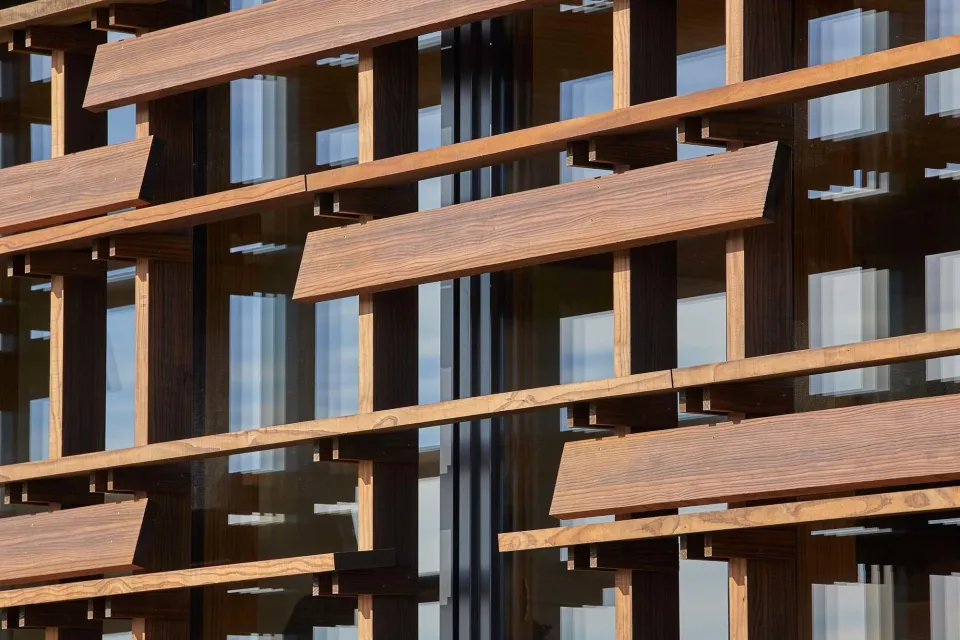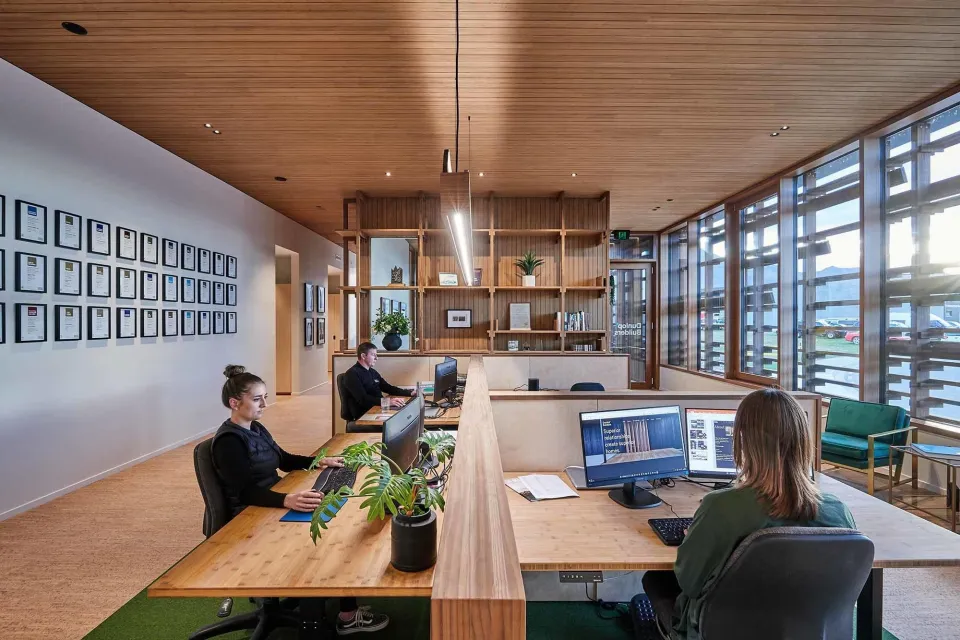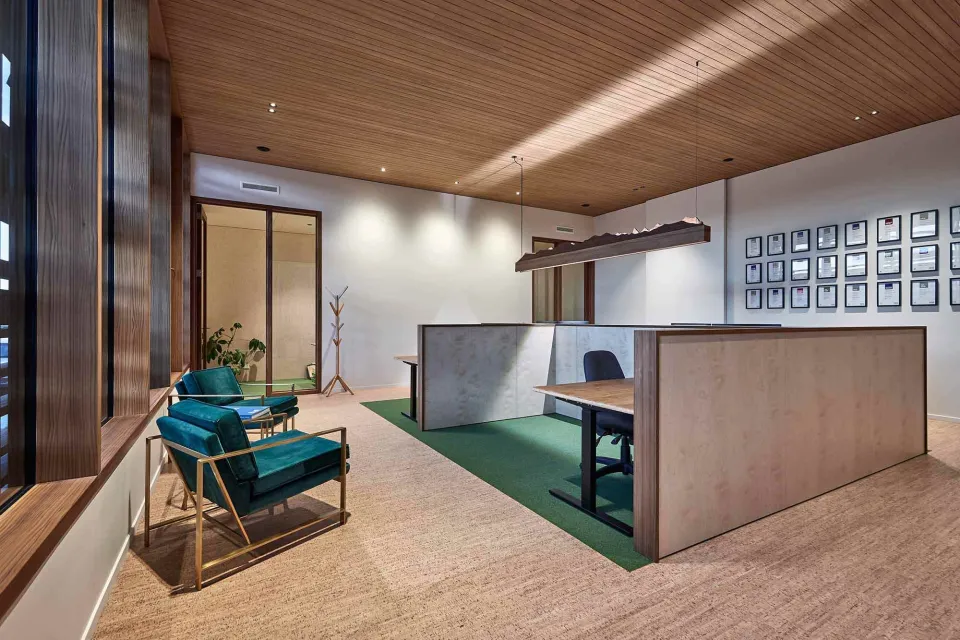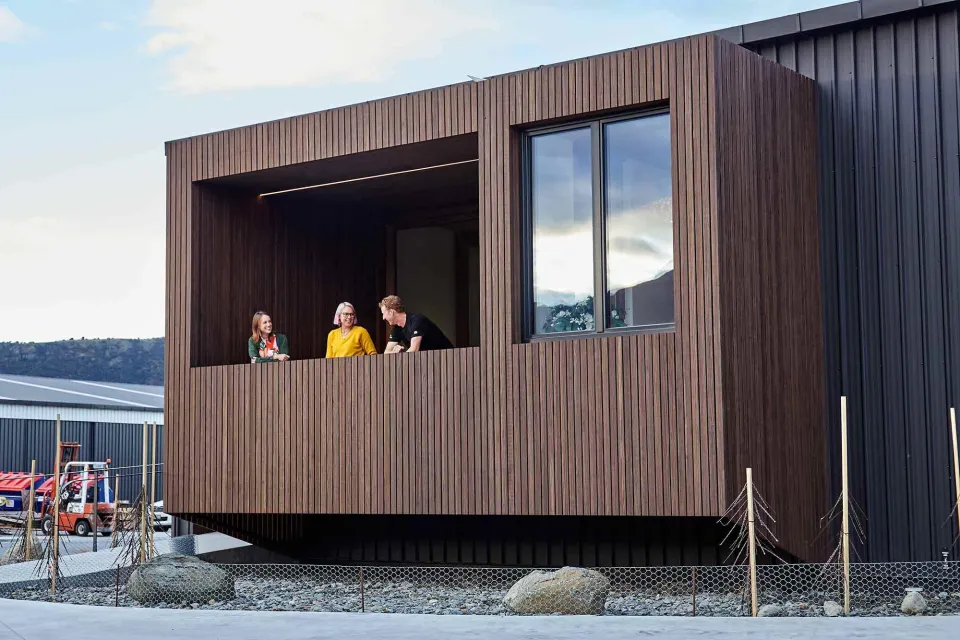-
About
-
Products
- By Timber Product
- Cladding
- Decking
- Screening
- Panelling
- View all
- By Application
- Exterior Cladding / Siding
- Exterior Rain Screen
- Interior Walls & Ceilings
- Soffits
- Screening, Fins & Battens
- Windows, Doors & Joinery
- Posts & Beams
- Accessories
- Coatings
- Fixings
- Samples
-
Resources
- Projects
- Contact
How Timber Framed Windows Affect the Carbon Footprint of Passive Houses
A 2022 report by UK-based Passivhaus Trust highlights the impact of window framing materials on a building’s carbon footprint.
Material choices are imperative to passivhaus design, affecting everything from the thermal performance to the overall embodied carbon of a building.
Titled ‘Passivhaus and Embodied Carbon’, this UK report details investigations into the use of different materials for passive house designs and how these choices affect the embodied carbon of such buildings.
This is a side of passivhaus design that some in the industry see as problematic, as while the operational carbon cost of passive buildings can be very low, the embodied carbon of materials such as insulation and triple glazing can be seen to counteract this.
Looking at the whole life carbon footprint of a building is a way to assess both operational and embodied carbon, and this involves looking at the building from ‘cradle to grave’, beginning with the product materials chosen and ending with its demolition or deconstruction.
Buildings are responsible for over 33% of greenhouse gas emissions globally, so it is important to find ways to reduce these, with one step being to decarbonise the manufacture of construction materials.
The report includes a comparison between the whole life carbon footprint of a house built to building regulations, against the same home upgraded to passivhaus standards with increased insulation, window specification and air tightness. It finds that even with additional elements such as high performance windows and greater levels of insulation, the passive house still beats the non-passive house on the whole life carbon footprint front, due to lower heating needs and better energy efficiency.
As for window framing choices, the report compares different levels of glazing alongside different framing materials and finds a similar pattern, with the lifespan of the window frame making as much of an impact on the whole life carbon footprint of the home as its level of glazing. The report also highlights that the orientation of the window makes even more of an impact than either the framing material or glazing - with south-facing windows performing best in a UK setting.
While orientation is no doubt important, New Zealand based energy and carbon analyst Jonathon Holmes of Net Zero Eco: Consulting for the Future agrees that window framing materials are a crucial aspect of passive house design.
“Probably the most influential study when I was looking at windows for my own Passive House was by Heriot-Watt University comparing uPVC, timber and alu-timber frame windows and doors across a number of climate zone types,” he says. “The study suggested that timber only was the best option with nearly the same durability as alu-timber but at much lower cost.”
Locally in New Zealand, window company Thermadura uses Abodo timber for their windows, which have been used recently for New Zealand’s first Passive House Plus* commercial building, the Dunlop Hub in Wanaka.*
“I’m aware that Thermadura would normally use larch for timber only and then go to spruce for alu-timber as the timber species has slightly better thermal performance to compensate the lower performance from the alu-timber frame, so the net result for the window frame was the same overall using the more thermally efficient spruce,” says Jonathon.
Looking into the carbon aspect of such specifications, Jonathan says there are a small number of Environmental Product Declarations that detail the carbon footprint of windows, pointing to these examples for uPVC, modified timber windows, timber windows, and Alu-timber windows.
One way to calculate the impact of a material is through looking at its Lambda value, which is a measure of thermal conductivity. In Jonathon’s research, he has looked at adjusting for different timber species used by Thermadura according to their Lambda values.
“In terms of adjusting for the timber species used, I've used the Lambda values from Jason Quinn at Sustainable Engineering Ltd to essentially adjust the thermal performance of the stated data from Thermadura.
Over the life of the product, Abodo’s figures would be boosted by the extra durability qualities of the Vulcan timber, due to its thermal modification process, which would give greater longevity to the window frames.
When choosing materials, Jonathan says specifiers must look into durability, thermal performance, affordability and carbon. If a building has an estimated life of 50 years, it is important to note that most window frames will not last that long.
“In terms of affordability, uPVC would be cheaper upfront but during the life of a building, it would need to be replaced – and can't be maintained or potentially recycled at end of life – so the total cost of ownership swings back in favour of wood.”
Back in 2020, Vulcan was declared an officially accepted material for passive houses due to its superior thermal performance, and Abodo’s Environmental Product Declaration for Abodo timbers is always readily available.
*The ‘Plus’ is a recent update to the Passive House classifications, with Passive House Classic focusing on comfort, health and energy efficiency, and Plus and Premium standards including onsite renewable energy generation and greater levels of energy efficiency.
Find Out More
Read the detailed investigations into the use of different materials for passive house designs and how these choices affect the embodied carbon of such buildings in the Passivehaus and Embodied Carbon report
Compare Different EPD’s
Abodo engaged JCH Industrial Ecology Ltd to conduct a survey of published EPDs for six unmodified, chemically modified and thermally modified wood products commonly used for window and door joinery in the United Kingdom.





